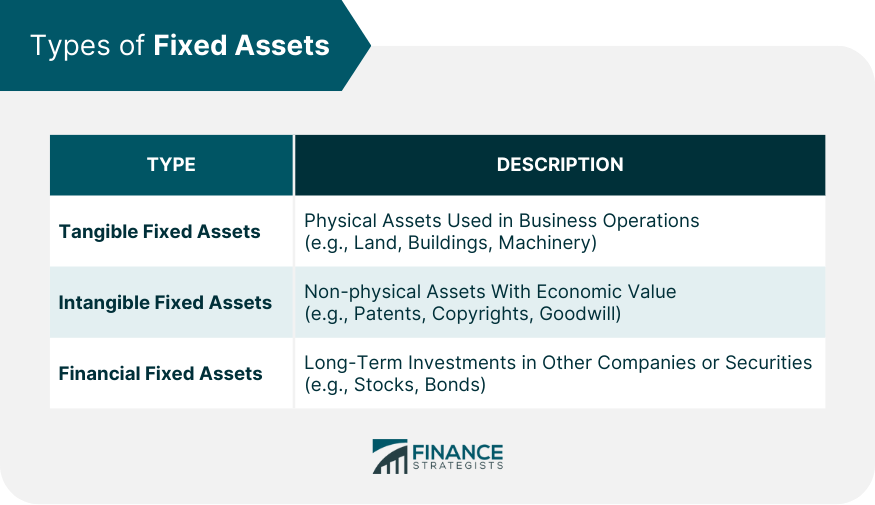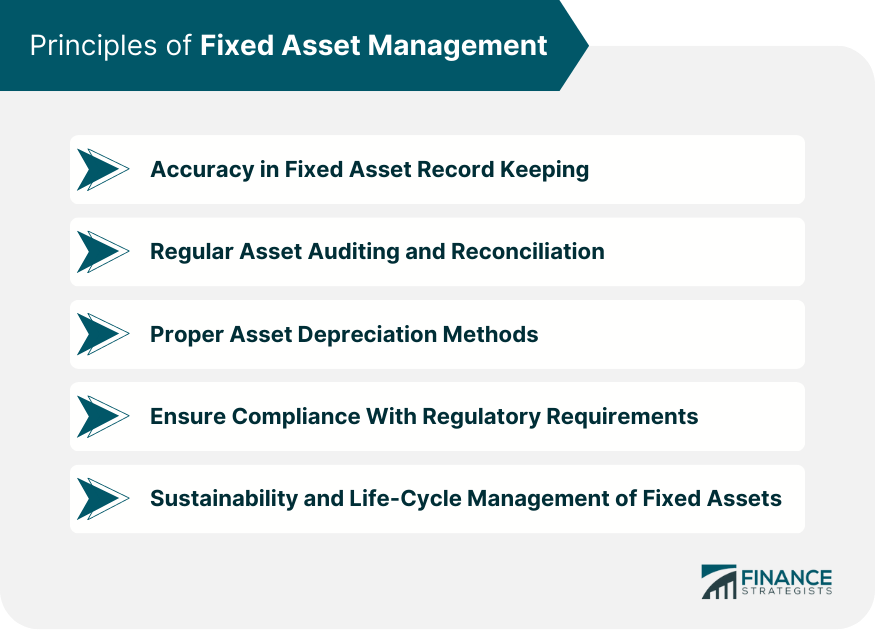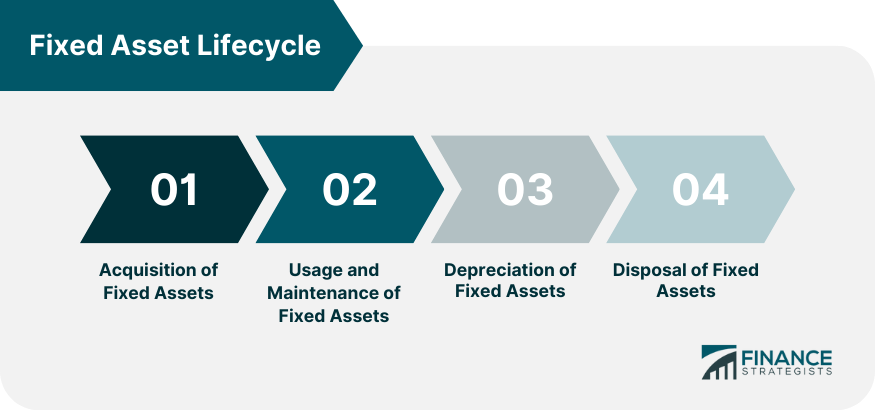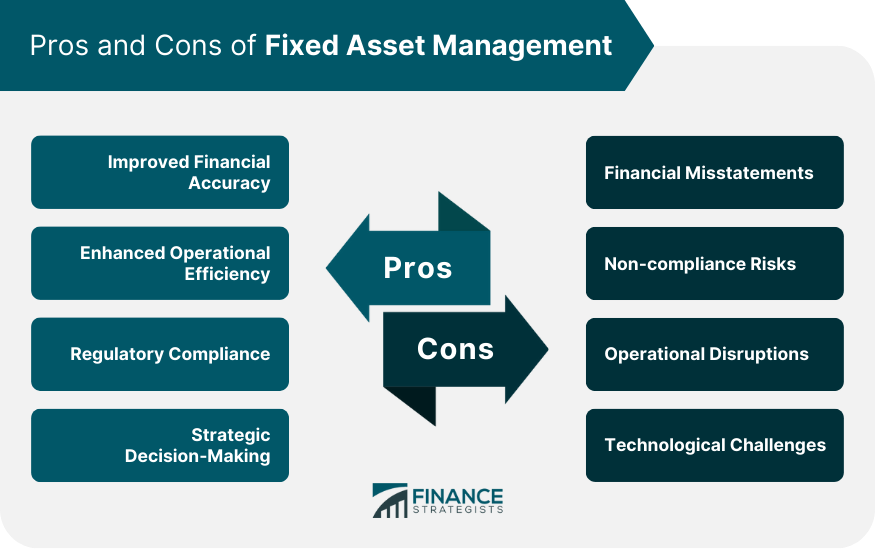Fixed Asset Management Overview
Fixed asset management refers to the process of managing a company's physical and intangible assets throughout its lifecycle. This includes acquiring, using, maintaining, depreciating, and disposing of assets in an efficient and cost-effective manner.
Its aim is to optimize asset usage, ensure accurate financial accounting, and comply with regulatory standards.
Effective fixed asset management offers multiple benefits, such as improved financial accuracy, enhanced operational efficiency, and informed strategic decision-making.
However, it also carries risks such as potential financial misstatements, non-compliance penalties, and operational disruptions.
These risks can be mitigated through accurate record-keeping, regular audits, proper asset maintenance, and embracing digital solutions for asset management.
Types of Fixed Assets
Fixed assets, sometimes referred to as capital assets, long-term assets, or hard assets, are items of value owned by a business that is used over a prolonged period, typically a year or more.
They contribute directly to a company's core business operations and are not easily converted into cash.
Tangible Fixed Assets
Tangible fixed assets are physical assets that a business uses in its operation. These can include property, plant, and equipment (PP&E) such as land, buildings, machinery, vehicles, and furniture.
Their physical presence enables a company to carry out its operations, manufacture products, or provide services.
These assets depreciate over time due to usage, market conditions, or technological advancements, requiring efficient asset management to track their lifespan and value.
Intangible Fixed Assets
Intangible fixed assets, on the other hand, are non-physical assets that a company owns. These assets include patents, copyrights, trademarks, franchises, customer lists, brand names, and goodwill.
While they might not have a physical presence, they can generate substantial economic value for the company over time, making their management crucial.
Financial Fixed Assets
Financial fixed assets include long-term investments a company holds in other companies or securities, such as bonds or stocks.
The objective behind these assets is often income generation or strategic involvement in another company's operations. Managing these assets involves monitoring their performance, assessing risks, and making informed decisions about holding or divesting.

Principles of Fixed Asset Management
Effective fixed asset management is predicated on some foundational principles aimed at maintaining accuracy, ensuring regulatory compliance, and optimizing asset usage over their life cycle.
Accuracy in Fixed Asset Record Keeping
Accurate record-keeping forms the backbone of effective asset management. It involves maintaining a comprehensive and updated inventory of all fixed assets, their purchase date, cost, accumulated depreciation, net book value, and expected useful life.
It also helps in preventing ghost assets (assets that are lost, stolen, or unusable but still recorded in the books) and zombie assets (assets that are in use but not recorded in the books).
Regular Asset Auditing and Reconciliation
Regular audits and reconciliation of fixed assets with their records ensure their physical verification and valuation accuracy.
This practice mitigates the risk of fraud, theft, or misplacement of assets and helps identify any discrepancies between accounting records and actual assets.
Proper Asset Depreciation Methods
Depreciation is a method to spread the cost of a fixed asset over its useful life. Using appropriate depreciation methods like straight-line, declining balance, or units of production ensures a fair representation of asset value in financial statements, impacting profits and tax liabilities.
Ensuring Compliance With Regulatory Requirements
Fixed asset management should adhere to applicable accounting standards and tax laws. Compliance prevents legal issues and financial penalties and ensures accurate representation of the company's financial position to stakeholders.
Sustainability and Life-cycle Management of Fixed Assets
In the age of sustainability, asset life-cycle management becomes crucial. It involves practices that extend the useful life of assets, reduce environmental impact, and manage disposal or recycling at the end of their life, aligning with the company's sustainability goals.

Fixed Asset Lifecycle
A fixed asset goes through various stages during its lifecycle: acquisition, usage and maintenance, depreciation, and disposal.
Acquisition of Fixed Assets
The acquisition phase involves the purchase or lease of a fixed asset. This phase requires careful planning and analysis of the asset's necessity, cost-benefit, and impact on cash flow.
A company needs to record the acquisition correctly, considering any associated costs like installation or transportation.
Usage and Maintenance of Fixed Assets
In the usage phase, the focus is on maintaining the asset and ensuring optimal utilization.
Regular maintenance schedules, adherence to usage guidelines, and preventive repairs can extend an asset's useful life and maintain its performance.
Depreciation of Fixed Assets
During the asset's life, it depreciates in value. Regular tracking of depreciation and updating in financial records ensure an accurate reflection of the asset's current value and impact the company's tax liabilities and profitability.
Disposal of Fixed Assets
At the end of the asset's useful life, the company needs to plan for its disposal. It could involve selling, recycling, or disposing of the asset in an environmentally friendly way.
It's essential to remove the disposed asset from the records accurately, which affects the company's financial statements

Financial Impact of Effective Fixed Asset Management
Effective fixed asset management can have substantial financial impacts on a company.
On Cash Flow
Optimal utilization and maintenance of assets can extend their useful life, reducing the need for frequent replacements and, thus, saving cash outflows. Accurate depreciation tracking also impacts tax liabilities, affecting cash flow.
On Profit and Loss Statements
Appropriate asset management can lower costs related to repairs, replacements, and penalties due to non-compliance, positively impacting the profit and loss statement. Depreciation is also an expense that impacts profitability.
On Balance Sheets
The value of fixed assets and accumulated depreciation are key components of a company's balance sheet. Effective management ensures that these numbers accurately reflect the company's financial position.
On Tax Liabilities
Depreciation is a tax-deductible expense. Therefore, accurate depreciation calculation and tracking can help in managing tax liabilities effectively.
Pros of Fixed Asset Management
Improved Financial Accuracy
An efficient fixed asset management process ensures that the assets' values are accurately represented in financial statements. This accuracy directly affects profitability, cash flow, and the overall financial health of a business.
Enhanced Operational Efficiency
Through regular maintenance schedules and timely replacements, fixed asset management enhances the operational efficiency of a business. It extends the useful life of assets, thereby optimizing their usage and reducing the frequency of asset replacements.
Regulatory Compliance
Fixed asset management helps businesses comply with various accounting and taxation regulations. Compliance not only prevents legal issues and financial penalties but also ensures the company's financial records accurately reflect its actual financial position.
Strategic Decision-Making
With an efficient, fixed asset management system, businesses gain valuable insights into asset utilization, condition, and performance. This information can guide strategic decisions related to asset acquisition, maintenance, and disposal.
Cons in Fixed Asset Management
Financial Misstatements
Inaccurate asset tracking and depreciation calculation can lead to financial misstatements. This inaccuracy can distort a company's actual financial position, misguide decision-making, and potentially lead to financial losses.
Non-compliance Risks
Non-compliance with regulatory requirements related to fixed asset management can result in financial penalties, legal complications, and damage to the company's reputation.
Operational Disruptions
Poorly managed assets can lead to operational disruptions. These could stem from asset breakdowns due to inadequate maintenance, delayed replacements, or sub-optimal asset utilization.
Technological Challenges
With many businesses moving towards digital solutions for fixed asset management, technological risks are emerging. These can include software glitches, cyber threats, and challenges related to technology integration and user training.

Conclusion
Fixed asset management is an essential practice that ensures optimal utilization and accurate valuation of a company's assets.
By adhering to sound management principles, businesses can improve financial accuracy, enhance operational efficiency, and make informed strategic decisions.
They can also mitigate risks associated with financial inaccuracies, regulatory non-compliance, and operational disruptions.
While technological advancements present a new set of challenges, they also offer solutions to streamline and improve asset management.
Hence, companies need to balance the use of technology while ensuring accurate record-keeping, regular audits, and appropriate depreciation methods. Fixed asset management, thus, impacts not just a company's current financial health but its strategic future as well.
Fixed Asset Management FAQs
Fixed asset management aims to optimize the use of a company's assets, ensure accurate financial accounting, and maintain regulatory compliance. It encompasses the entire lifecycle of an asset, from acquisition and use to depreciation and disposal.
Effective fixed asset management enhances financial accuracy by ensuring that assets are correctly valued in financial statements. It impacts cash flow, profit and loss statements, balance sheets, and tax liabilities, thereby influencing the overall financial health of the company.
Risks in fixed asset management include potential financial misstatements due to inaccurate asset tracking or depreciation calculation, penalties from non-compliance with regulatory standards, operational disruptions due to poorly managed assets, and technological challenges.
Fixed asset management includes tangible assets like machinery, buildings, and vehicles, intangible assets such as patents, copyrights, and trademarks, and financial assets like long-term investments in securities or other companies.
Digital solutions for fixed asset management can automate and streamline asset tracking, maintenance scheduling, depreciation calculation, and regulatory reporting. However, these solutions also come with risks, such as software glitches or cyber threats, which need careful handling.
True Tamplin is a published author, public speaker, CEO of UpDigital, and founder of Finance Strategists.
True is a Certified Educator in Personal Finance (CEPF®), author of The Handy Financial Ratios Guide, a member of the Society for Advancing Business Editing and Writing, contributes to his financial education site, Finance Strategists, and has spoken to various financial communities such as the CFA Institute, as well as university students like his Alma mater, Biola University, where he received a bachelor of science in business and data analytics.
To learn more about True, visit his personal website or view his author profiles on Amazon, Nasdaq and Forbes.











